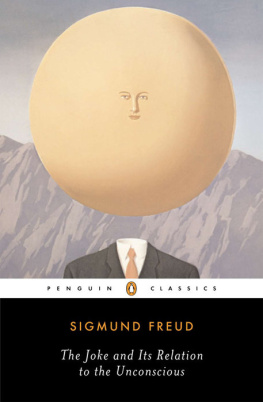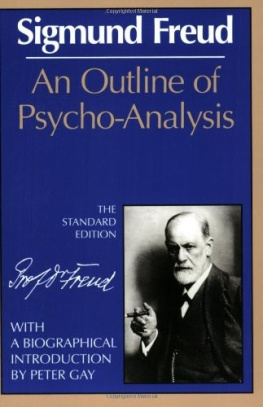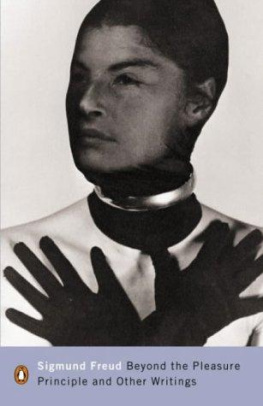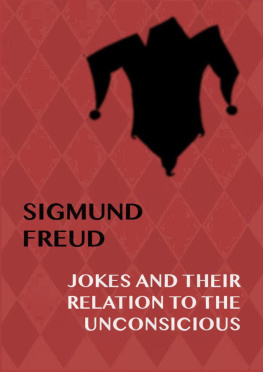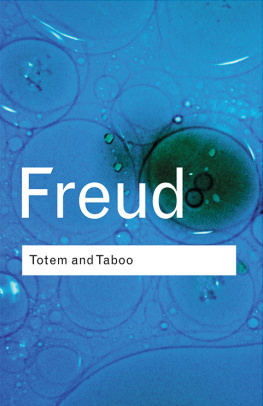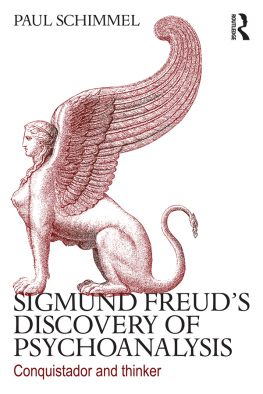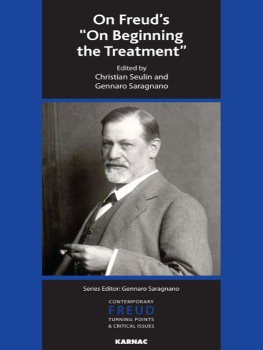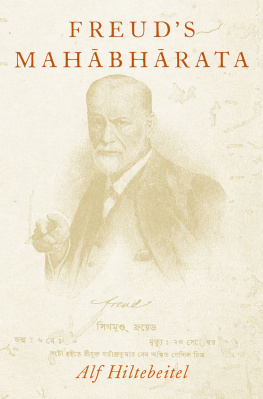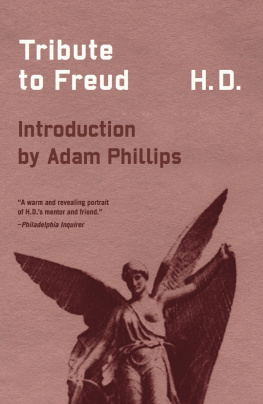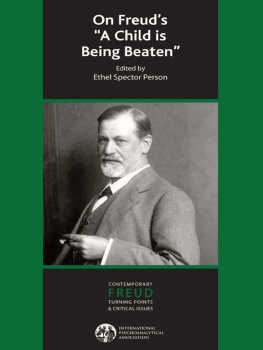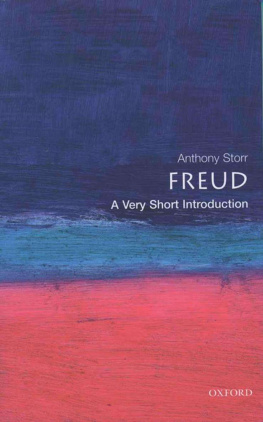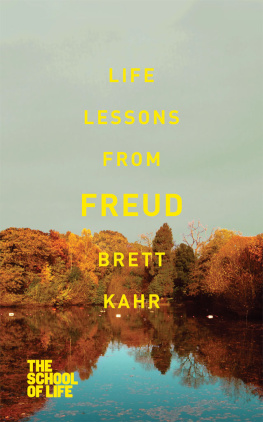Sigmund Freud - The Psychopathology of Everyday Life
Here you can read online Sigmund Freud - The Psychopathology of Everyday Life full text of the book (entire story) in english for free. Download pdf and epub, get meaning, cover and reviews about this ebook. year: 2003, publisher: Penguin Publishing Group, genre: Religion. Description of the work, (preface) as well as reviews are available. Best literature library LitArk.com created for fans of good reading and offers a wide selection of genres:
Romance novel
Science fiction
Adventure
Detective
Science
History
Home and family
Prose
Art
Politics
Computer
Non-fiction
Religion
Business
Children
Humor
Choose a favorite category and find really read worthwhile books. Enjoy immersion in the world of imagination, feel the emotions of the characters or learn something new for yourself, make an fascinating discovery.
- Book:The Psychopathology of Everyday Life
- Author:
- Publisher:Penguin Publishing Group
- Genre:
- Year:2003
- Rating:4 / 5
- Favourites:Add to favourites
- Your mark:
- 80
- 1
- 2
- 3
- 4
- 5
The Psychopathology of Everyday Life: summary, description and annotation
We offer to read an annotation, description, summary or preface (depends on what the author of the book "The Psychopathology of Everyday Life" wrote himself). If you haven't found the necessary information about the book — write in the comments, we will try to find it.
The Psychopathology of Everyday Life — read online for free the complete book (whole text) full work
Below is the text of the book, divided by pages. System saving the place of the last page read, allows you to conveniently read the book "The Psychopathology of Everyday Life" online for free, without having to search again every time where you left off. Put a bookmark, and you can go to the page where you finished reading at any time.
Font size:
Interval:
Bookmark:
PENGUIN  CLASSICS
CLASSICS
THE PENGUIN FREUD GENERAL EDITOR:
ADAM PHILLIPS
THE PSYCHOPATHOLOGY OF EVERYDAY LIFE
SIGMUND FREUD was born in 1856 in Moravia; between the ages of four and eighty-two his home was Vienna: in 1938 Hitlers invasion of Austria forced him to seek asylum in London, where he died in the following year. His career began with several years of brilliant work on the anatomy and physiology of the nervous system. He was almost thirty when, after a period of study under Charcot in Paris, his interests first turned to psychology; and after ten years of clinical work in Vienna (at first in collaboration with Breuer, an older colleage) he invented what was to become psychoanalysis. This began simply as a method of treating neurotic patients through talking, but it quickly grew into an accumulation of knowledge about the workings of the mind in general. Freud was thus able to demonstrate the development of the sexual instinct in childhood, and largely on the basis of an examination of dreams, arrived at this fundamental discovery of the unconscious forces that influence our everyday thoughts and actions. Freuds life was uneventful, but his ideas have shaped not only many specialist disciplines, but also the whole intellectual climate of the twentieth century.
ANTHEA BELL was born in Suffolk and educated at Somerville College, Oxford. She has worked as a translator for many years, primarily from German and French. Her translations include works of nonfiction (biology, politics, social history, musicology and art history), literary and popular fiction, and books for young people including classic German works by the Grimm brothers, Clemens Brentano, Wilhelm Hauff and Christian Morgenstern. Recent translations include E. T. A. Hoffmanns The Life and Opinions of the Tomcat Murr (1999), Lilian Faschingers Vienna Passion (2000) and W. G. Sebalds Austerliz (2001). Anthea Bell has also served on the committee of the Translators Association and the jury panel of the Schlegel-Tieck German translation prize in the UK, and has received a number of translation prizes and awards, including the 1987 Schlegel-Tieck award for Hans Bemmanns The Stone and the Flute. She lives in Cambridge and has two adult sons.
PAUL KEEGAN was formerly editor of Penguin Classics, and is now Poetry Editor at Faber & Faber. He is the editor of The New Penguin Book of English Verse (2000).
ADAM PHILLIPS was formerly Principal Child Psychotherapist at Charing Cross Hospital in London. He is the author of several books on psychoanalysis including On Kissing, Tickling and Being Bored, Darwins Worms, Promises, Promises and Houdinis Box.
SIGMUND FREUD
The Psychopathology
of Everyday Life
Translated by ANTHEA BELL
with an Introduction by PAUL KEEGAN
PENGUIN BOOKS
PENGUIN BOOKS
Published by the Penguin Group
Penguin Group (USA) Inc., 375 Hudson Street, New York, New York 10014, U.S.A.
Penguin Group (Canada), 90 Eglinton Avenue East, Suite 700, Toronto,
Ontario, Canada M4P 2Y3 (a division of Pearson Penguin Canada Inc.)
Penguin Books Ltd, 80 Strand, London WC2R 0RL, England
Penguin Ireland, 25 St Stephens Green, Dublin 2, Ireland (a division of Penguin Books Ltd)
Penguin Group (Australia), 250 Camberwell Road, Camberwell,
Victoria 3124, Australia (a division of Pearson Australia Group Pty Ltd)
Penguin Books India Pvt Ltd, 11 Community Centre, Panchsheel Park, New Delhi 110 017, India
Penguin Group (NZ), cnr Airborne and Rosedale Roads,
Albany, Auckland 1310, New Zealand (a division of Pearson New Zealand Ltd)
Penguin Books (South Africa) (Pty) Ltd, 24 Sturdee Avenue,
Rosebank, Johannesburg 2196, South Africa
Penguin Books Ltd, Registered Offices: 80 Strand, London WC2R 0RL, England
Zur Psychopathologie des Alltagsleben first published 1901 in
Monatsschrift fr Psychiatrie und Neurologie 10 (1/2)
English translation published in Penguin Books (U.K.) 2002
This edition published 2003
9 10 8
Sigmund Freuds German text collected in Gesammelte Werke (194052)
copyright Imago Publishing Co., Ltd. London, 1941
Translation and editorial matter copyright Anthea Bell, 2002
Introduction copyright Paul Keegan, 2002
All rights reserved
LIBRARY OF CONGRESS CATALOGING IN PUBLICATION DATA
Freud, Sigmund, 18561939.
[Zur Psychopathologie des Alltagslebens. English]
The psychopathology of everyday life / Sigmund Freud; translated by Anthea Bell with an introduction by Paul Keegan.
p. cm.
Includes bibliological references.
ISBN: 978-1-101-64478-2
1. Psychoanalysis. 2. Memory. 3. Repression (Psychology)
4. Paragrammatism. 5. Freud, sigmund, 18561939. I. Title.
BF173.F82513 2003
150.1952dc21 2003043308
Printed in the United States of America
Set in Adobe New Caledonia
Except in the United States of America, this book is sold subject to the condition that it shall not, by way of trade or otherwise, be lent, re-sold, hired out, or otherwise circulated without the publishers prior consent in any form of binding or cover other than that in which it is published and without a similar condition including this condition being imposed on the subsequent purchaser.
The scanning, uploading and distribution of this book via the Internet or via any other means without the permission of the publisher is illegal and punishable by law. Please purchase only authorized electronic editions, and do not participate in or encourage electronic piracy of copyrighted materials. Your support of the authors rights is appreciated.
There is a house where twice every day for six years, at regular hours, I used to wait to be let in outside a door on the second floor
While doing things, or in the interstices between doing things, we do other, less obvious things. The Psychopathology of Everyday Life is the inventory of what goes on when nothing much is going on, or of what we do when we think we know what we are doing. Its concern is ordinary life, using as its optic the not-so-ordinary life of the bourgeoisie at the centurys turn, in Vienna and other Hapsburg capitals and resorts. The stage is largely given over to what Veblen termed the performance of leisure. Doing nothing much, circa 1900, is all-consuming: we sit in coffee houses, wait in rooms, stand in trams; we visit each other, and effect introductions; we return from honeymoon, compose letters, consult watches and timetables; we take holidays, stay at pensione, in sanatoria, at health resorts and spas; we stroll zoos, walk mountains, wander museums. We are in thrall to travel, or to the rituals of displacement as if places are more important than where they are. And wherever we are we repeat ourselves: we window-shop, stare at statues, scrutinize business plates, study menus. We are addicted to signs of every description, describing anything.
Above all (and Karl Kraus ridicules us for it) we read magazines and newspapers, by the avalanche. We drown in print. By the 1920s in Germany more than a thousand magazines were being founded annually. Added to which the streets are aswarm with advertisements, hoardings, billboards, displays. The metropolis of Everyday Life is as much a lexical as a visual field. And print is the omnipresent occasion for misprints, for wandering meanings. Suddenly the field of nonsense seems to have been exponentially enlarged. (Item: Our readers will be well aware that we have always promoted the common good in the most [un]self-interested manner.) This extends to the
Next pageFont size:
Interval:
Bookmark:
Similar books «The Psychopathology of Everyday Life»
Look at similar books to The Psychopathology of Everyday Life. We have selected literature similar in name and meaning in the hope of providing readers with more options to find new, interesting, not yet read works.
Discussion, reviews of the book The Psychopathology of Everyday Life and just readers' own opinions. Leave your comments, write what you think about the work, its meaning or the main characters. Specify what exactly you liked and what you didn't like, and why you think so.


